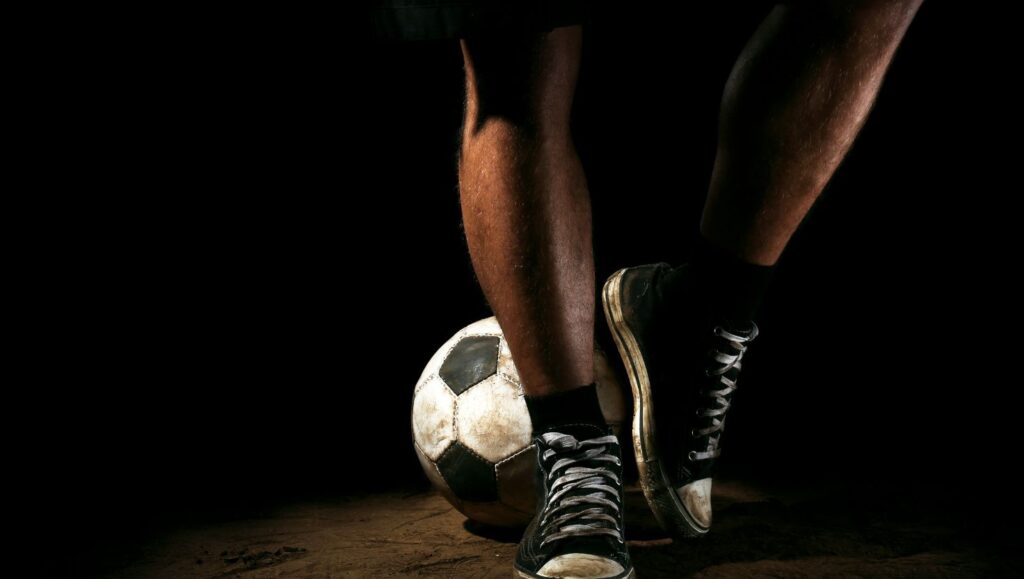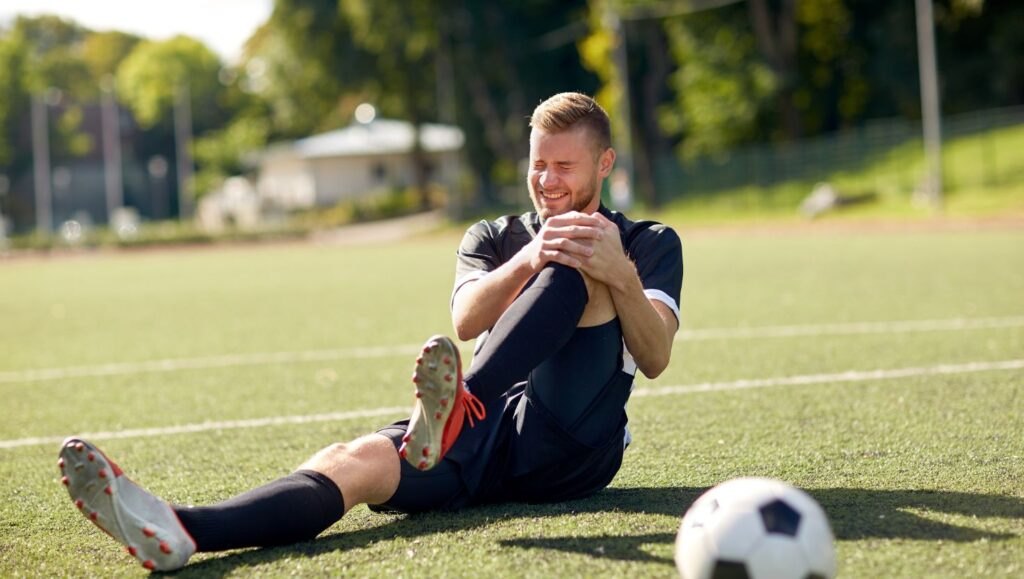The tension in a packed stadium reaches a deafening pitch as the match boils down to a single, decisive moment—a penalty shootout. These nerve-wracking finales have transformed from mere tie-breakers into the ultimate spectacle of football drama, where the line between glory and despair is razor-thin. With every step towards the penalty spot, players confront not just their opponents but their own fears, hopes, and the weight of entire nations. The moment demands precision from the foot, courage from the heart, and resilience from the soul.
Over decades, penalty shootouts have shaped legacies and defined tournaments, becoming a global phenomenon that transcends culture and league. From the World Cup’s legendary face-offs to the electrifying club clashes in the UEFA Champions League, this high-stakes duel tests more than just skill—it challenges mental strength, psychological warfare, and the unforgiving caprice of fate. Brands like Nike, Adidas, and Puma sponsor stars who etch their names forever in these moments, while innovative gear from Umbro, Kappa, and Mizuno embraces technology to support peak performance under pressure.
But what exactly turns a quiet kick from 12 yards into a heart-stopping narrative? It’s the rich interplay of human emotion, tactical preparation, and split-second decisions that culminate in a breathtaking climax. Today’s analysis digs deep into the science and spectacle of penalty shootouts, uncovering how players manage their nerves, how goalkeepers engage in mind games, and why shootouts are perhaps the purest expression of fate in sport. Whether you’re a seasoned fan or just finding your way into the beautiful game, this exploration offers a vivid pass to the drama unfolding wherever a ball meets a net in the final showdown.

Understanding Penalty Shootouts: The Drama Behind the Ultimate Football Duel
The penalty shootout stands as football’s most electrifying, pressure-packed encounter—a moment where an entire match’s fate collapses into a handful of kicks. Beyond the simple rules lies a complex drama, blending history, psychology, and tactical nuance. First introduced in major tournaments in the 1970s, shootouts replaced the less satisfying alternatives like coin tosses or endless match replays, giving the game a thrilling and decisive crescendo.
At its core, a penalty shootout involves players stepping up to the spot 12 yards from goal, kicking the ball while the goalkeeper tries to stop it. Typically, each team has five attempts, alternating turns. If the scores remain tied, the shootout proceeds into sudden death, where every kick could mean victory or defeat. The mechanics may seem straightforward, but the psychological tension is immense, with players facing a unique blend of external expectations and internal pressure.
Despite being a test of skill, shootouts are significantly influenced by the mental state of the players. Visualization techniques, personalized rituals, and mental rehearsal have become standard tools for managing stress and improving execution. These strategies allow players to transform what seems like pure chance into a contest of nerve and preparation. Brands like Under Armour and Reebok back athletes who employ such methods, providing gear engineered to optimize mind-body connectivity during these clutch moments.
- Purpose and function: Shootouts decide matches conclusively after tied games.
- Format: Five alternating attempts followed by sudden death rounds.
- Mental edge: Visualization and routine mitigate overwhelming pressure.
- Evolution: Introduced to replace less equitable tie-break methods post-1970s.
- Global impact: Integral to major competitions like the World Cup and international cups featured on rktfootball’s international competitions.
| Aspect | Details | Impact |
|---|---|---|
| Distance | 12 yards (11 meters) from the goal line | Standardizes challenge level globally |
| Kicks per team | 5 initially, then sudden death if tied | Builds tension progressively |
| Goalkeeper rule | Must stay on the line until kick | Ensures fairness and skill contest |
| Retake conditions | Early keeper movement or kicker’s stop | Limits unfair advantages |
| Psychological tools | Visualization, deep breathing, self-talk | Improves composure and accuracy |
The Mind Games Inside Penalty Shootouts: Psychology of Striker vs. Goalkeeper
What transforms a simple penalty kick into an epic psychological battle is the mind war between striker and goalkeeper. Every twitch, stance, and gaze carries meaning. The standoff resembles a high-stakes chess match, where anticipation and deception are weapons alongside physical skill.
Strikers must decide instantly: go for power to overwhelm the keeper or place the ball with precision? Should they trust instinct or strategy? Meanwhile, goalkeepers try to read body language, dive early to distract, or gamble on a direction. This delicate cat-and-mouse dynamic means neither side has full control, pushing each to the edge mentally.
Fear plays a critical role here. The dread of missing, of crushing dreams and expectations, can paralyze or motivate. Strikers benefit from shifting focus away from the fear of failure toward visualizing success. Techniques like positive self-talk and mental rehearsals are essential tools in this mental duel. Notably, data analytics now assist coaches in preparing players by analyzing opponents’ penalty tendencies, bringing a cutting-edge scientific layer to age-old mind games.
- Striker decisions: Choose between precision and power.
- Goalkeeper moves: Early dives and psychological gestures.
- Fear management: Cultivating confidence over anxiety.
- Data-driven prep: Analytics on shooter tendencies inform strategies.
- Mental routines: Self-talk, visualization, and focus drills.
| Player Role | Psychological Challenges | Common Strategies |
|---|---|---|
| Striker | Fear of missing; decision paralysis | Visualization; preset routine; positive affirmations |
| Goalkeeper | Predicting shot; pressure to save | Pre-kick movement; psychological distraction; studying shooter data |
Managing Pressure: Emotional Resilience and Coping in Penalty Shootouts
The emotional rollercoaster of a penalty shootout is something very few experiences match. Each shot carries fortunes; every goal triggers euphoric release, every miss brings crushing despair. Handling this emotional volatility is a skill athletes develop alongside their technical abilities.
Players learn to harness adrenaline instead of being overwhelmed by it. Techniques like deep breathing help maintain calm, while focusing on the present moment reduces distraction. Cognitive reframing is another critical tool—flipping negative thoughts such as “Don’t mess up” into empowering self-guidance like “Here’s how I’ll score.”
Team dynamics also play an extraordinary role. Encouragement from teammates following a goal or miss can stabilize emotions and reinforce confidence. This collective spirit often proves decisive, as players who feel supported tend to perform better under pressure.
- Breathing techniques: Control nerves before stepping up.
- Cognitive reframing: Turning fear into belief.
- Peer support: Positive reinforcement from teammates.
- Learning from misses: Resilience through reflection.
- Adrenaline management: Channeling energy for performance.
| Emotional Component | Strategies for Management | Outcome |
|---|---|---|
| Anxiety | Deep breathing, mindfulness | Improved focus and calmness |
| Fear of failure | Cognitive reframing, positive self-talk | Increased confidence |
| Pressure from crowd | Team support, visualization | Greater mental resilience |
| Post-miss recovery | Reflection, squad encouragement | Enhanced resilience for next attempt |
Training Mental Strength for Penalty Success: Practical Techniques and Tips
Mastering penalties requires more than perfect kicks—mental training is the bedrock of success. Footballers’ preparation extends well beyond fitness and ball technique to condition their minds for high-pressure shootouts.
Visualization ranks among the most popular methods. This practice involves imagining every aspect of a perfect penalty—the touch of the ball, the goalkeeper’s dive, the roar of the crowd. Repeating this mental rehearsal builds familiarity and confidence.
Establishing a ritual before taking a penalty is another useful strategy. From bouncing the ball a set number of times to deep breathing and focusing a specific way, these routines establish a calming structure that helps players maintain composure. Coaches and sports psychologists help craft these personalized sequences to improve reliability under pressure.
- Visualization: Mental rehearsal to reduce anxiety.
- Pre-kick routines: Physical signals to trigger focus.
- Sports psychology: Techniques like positive reinforcement.
- Growth mindset: Viewing penalties as opportunities, not threats.
- Consistent practice: Drills under simulated pressure situations.
| Technique | Description | Benefits |
|---|---|---|
| Visualization | Imagining successful penalty in detail | Reduces performance anxiety, improves accuracy |
| Pre-kick Rituals | Standardized actions like ball bouncing or breathing | Promotes focus and consistency |
| Positive Self-Talk | Replacing negative thoughts with empowering phrases | Boosts confidence and mental resilience |
| Growth Mindset | Seeing pressure moments as chances to excel | Encourages adaptability and sustained motivation |
| Simulation Drills | Practicing penalties under pressure conditions | Improves coping skills in real shootouts |

Penalty Shootouts in Various Sports: Comparing Nerve-Racking Tie-Breakers Across the Globe
While soccer’s penalty shootout captures worldwide attention, other sports have developed their own unique alternatives to break ties with a similar level of tension and excitement. Each version reflects the sport’s rhythm, rules, and culture, but the central theme remains: crowning a winner against all odds.
In ice hockey, the shootout involves each team taking three breakaway shots. If the score stays deadlocked, it switches to sudden death. Unlike soccer, the shorter ice rink and smaller goals mean goalies and shooters rely heavily on reflexes and quick skill bursts. Hockey jerseys often showcase logos from brands like Warrior and Hummel, integrating stylish performance gear optimized for these electrifying moments.
Cricket’s equivalent is the “Super Over,” a rapid sequence where each team gets six balls to score as many runs as possible. It’s a fast-paced showdown where batters and bowlers duel under intense pressure, thrilling fans worldwide.
Field hockey athletes face penalty strokes taken from a close distance, testing their speed and precision, while rugby union settles ties through kicking competitions from various distances, blending skill and nerves in a distinctive style.
- Ice hockey: Three-shot breakaways, sudden death if tied.
- Cricket: Super Over with six balls per team.
- Field hockey: Penalty strokes close to goal.
- Rugby union: Kicking competitions at different field marks.
- Soccer: Classic 12-yard penalty shootouts with five rounds plus sudden death.
| Sport | Tie-Break Format | Distance from Goal | Shots per Team | Sudden Death |
|---|---|---|---|---|
| Soccer | Penalty shootout | 12 yards | 5 + sudden death | Yes |
| Ice Hockey | Breakaway shootout | Center ice line | 3 + sudden death | Yes |
| Cricket | Super Over | N/A | 6 balls per team | No |
| Field Hockey | Penalty strokes | Closer than soccer | Variable | No |
| Rugby Union | Kicking competition | Various spots | Multiple attempts | No |
Understanding these varied formats reveals the universal value of clutch moments across sports and highlights the unique emotions each discipline brings to its defining shots.
